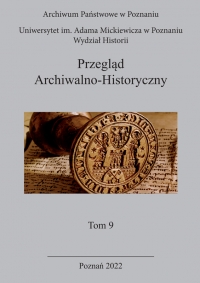Między administracyjną Scyllą i uczoną Charybdą. Urzędnik czy historyk - rozterki u narodzin profesjonalnej archiwistyki w Stanach Zjednoczonych
Between administrative Scylla and academic Charybdis: Clerk or historian - dilemmas in the early days of professional archival science in the United States
Author(s): Leszek PudłowskiSubject(s): Archiving, Social history, Recent History (1900 till today), 18th Century, 19th Century
Published by: Wydawnictwo Uniwersytetu Jagiellońskiego
Keywords: archival science in the United States; the origins of American archives; American National Archives; American state archives; pioneers of American archival science;
Summary/Abstract: In the United States, two main trends in archival science can be distinguished: traditional archival activities related to administration on the one hand, and on the other, active citizens who wanted to record the development of the new country. The foundation for the official administration and institutions was laid by Charles Thomson, the secretary of the first rebel Continental Congress in 1774. He worked in the parliament and laid the groundwork for the central authorities’ archive, encompassing 518 volumes. Thus, he is rightly referred to as the “godfather” of all American archivists. At the first session of the Congress after the USA had gained independence, in September 1789, it adopted the Act to provide for the safe-keeping of the Acts, Records and Seal of the United States. However, the authorities failed to establish the National Archives throughout the whole 19th century. The second trend in the history of American archival science was shaped by history lovers, with their individual collections and ephemera. With time, those grew into full-fledged, institutional libraries or were incorporated into the fonds of other archives, libraries, or museums. The most prominent collectors included Ebenezer Hazard, Jared Sparks, and Lyman Copeland Draper. Over time, individual states also started establishing historical and archival institutions, which grew to become centers of historical information or archival offices of state governments. The National Archives were only established in 1934, and employed many historians who hoped to work on the history of the country; however, the influx of contemporary documentation meant that only after many years of tedious, bureaucratic work could they start any actual historical cooperation. Meanwhile, the dispute regarding the line between the vocations of an archivist and a historian remains unresolved until today.
Journal: Przegląd Archiwalno-Historyczny
- Issue Year: 2022
- Issue No: 9
- Page Range: 73-97
- Page Count: 25
- Language: Polish

